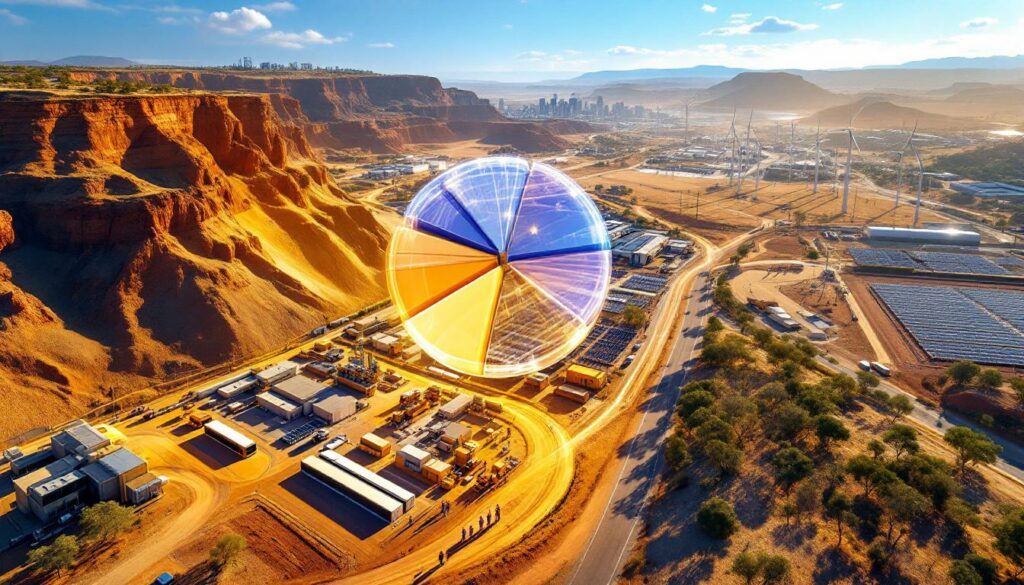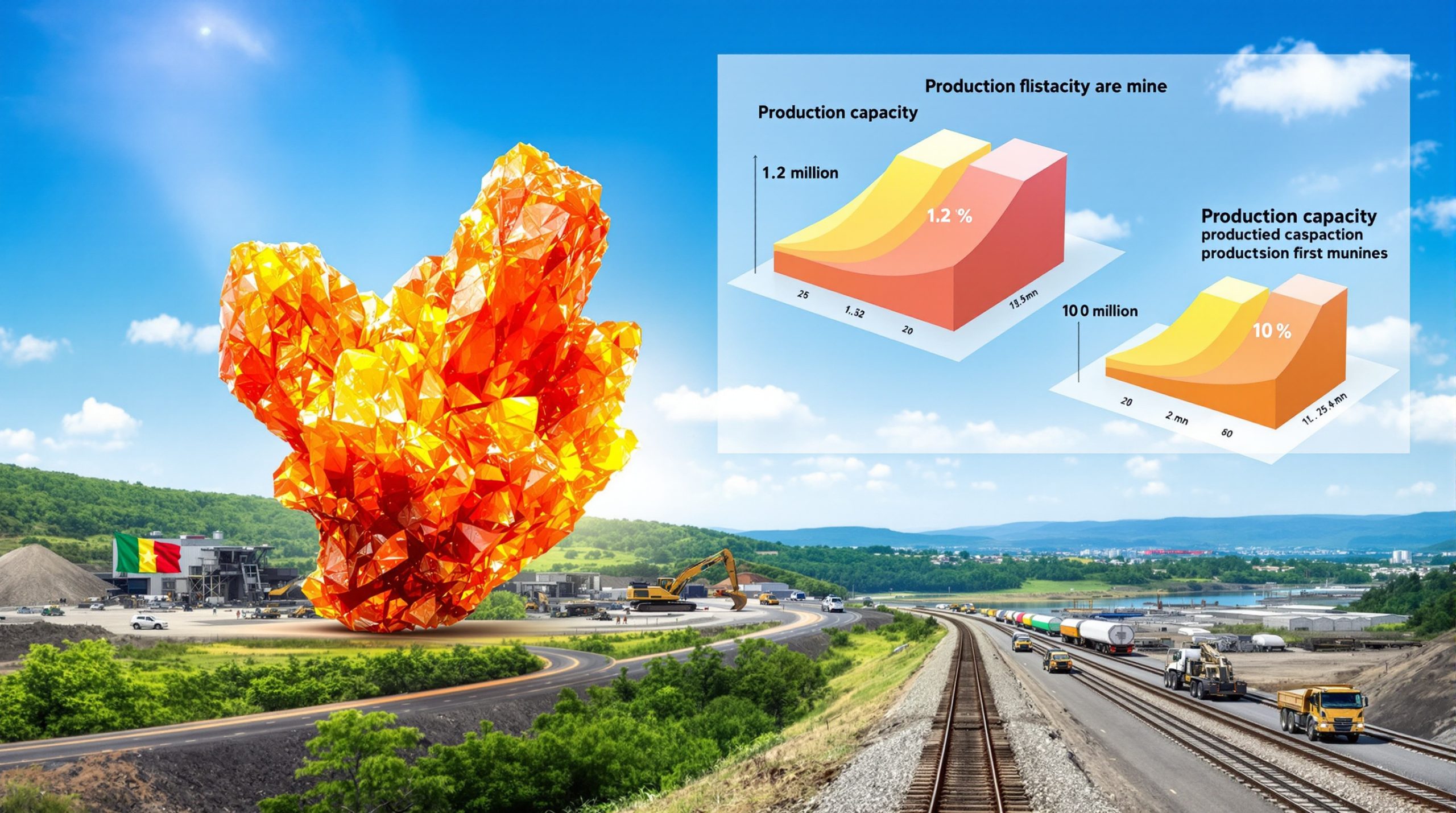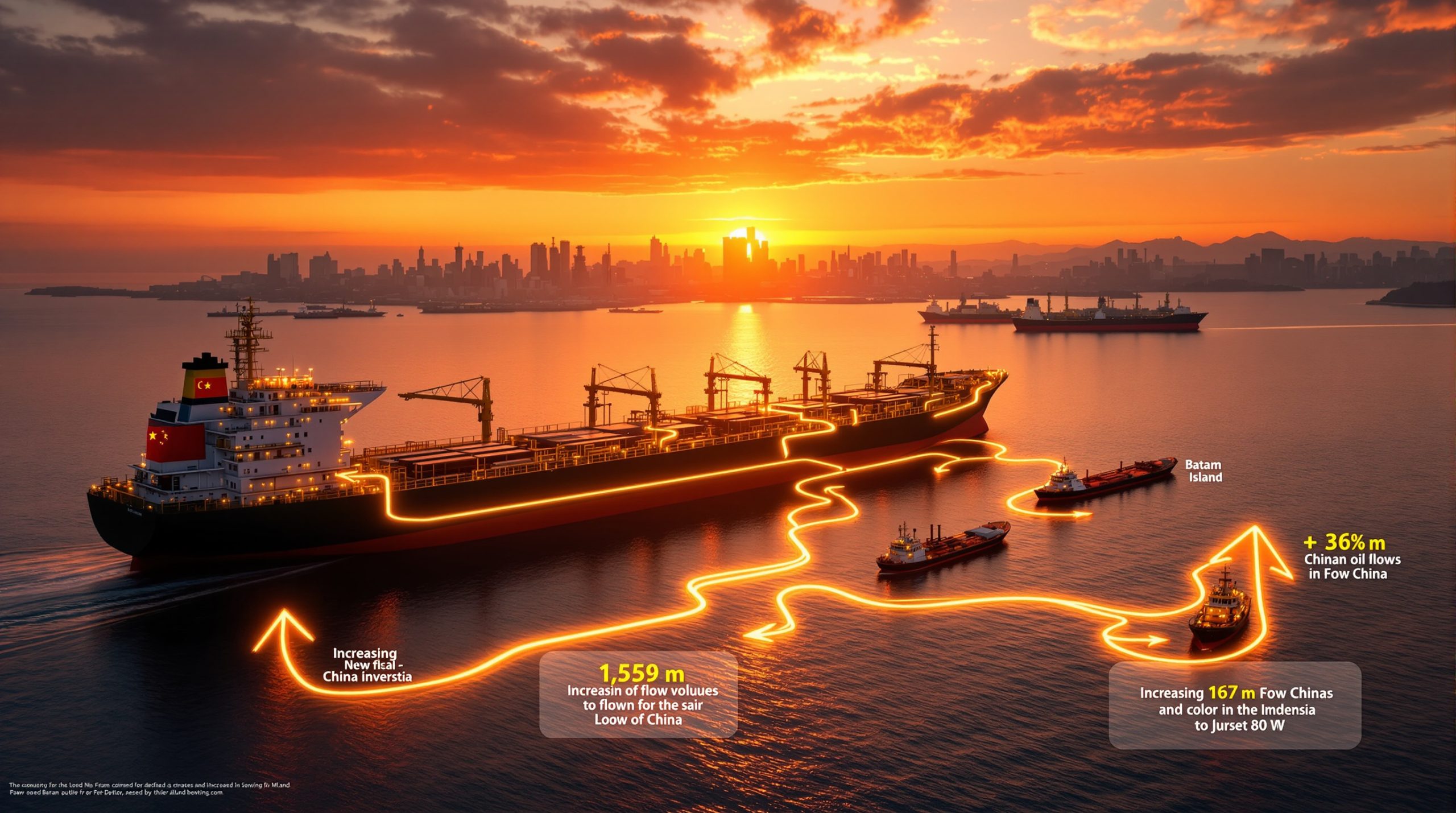What is Western Australia's $1.4 Billion Investment Plan?
Western Australia has unveiled a landmark $1.4 billion investment package in its 2025-26 State Budget, branded as "Future Made in WA." This comprehensive funding initiative represents one of the state's most significant economic diversification efforts in recent history, strategically targeting multiple sectors to transform WA's economic landscape beyond its traditional mining strengths.
The investment comes at a crucial time as global markets increasingly demand clean energy solutions and critical minerals transition, areas where Western Australia holds natural advantages. According to the WA Government, this funding will capitalize on these emerging opportunities while strengthening established industries.
Premier Roger Cook emphasized that this investment builds on generations of economic development: "Our economy has been made strong through the hard work of generations of Western Australians. We want to build on that record, make more things here, power WA on clean energy, supply the materials required for the world's clean energy transition, and diversify our economy by leveraging our existing strengths."
How Will the Strategic Industries Fund Impact WA's Economy?
$500 Million Expansion to Support Major Projects
The centerpiece of the investment package is a $500 million expansion of the Strategic Industries Fund, effectively doubling its total value to $1 billion. This enhanced fund targets large-scale industrial and clean energy projects throughout Western Australia, creating a foundation for sustainable economic growth across multiple sectors.
The expanded fund will support projects that demonstrate significant potential for job creation, export opportunities, and technological advancement. Industry analysts suggest this funding could accelerate WA's position in emerging markets including green hydrogen production, critical minerals processing, and advanced manufacturing.
"The Strategic Industries Fund expansion represents a once-in-a-generation opportunity to reshape Western Australia's industrial landscape," noted economic analyst Dr. Rebecca Thompson from the WA Economic Research Institute. "By focusing on large-scale transformative projects, the state is positioning itself at the forefront of the global energy transition."
Building on Historical Economic Strengths
Western Australia's economic development strategy deliberately builds upon the state's established strengths in resource extraction and processing. Rather than abandoning traditional industries, the investment package aims to extend these capabilities into new, higher-value sectors.
This approach acknowledges the deep expertise, infrastructure, and supply chains already established in WA's mining and resources sector contribution. By leveraging these foundations while encouraging innovation and diversification, the state government hopes to create a more resilient economy less vulnerable to commodity price fluctuations.
The investment strategy also recognizes Western Australia's geographical advantages, including:
- Abundant renewable energy resources (solar, wind, and tidal potential)
- Strategic location within Asian time zones for business operations
- Established port infrastructure for export markets
- World-class research institutions in mining, energy, and agriculture
What Manufacturing Initiatives Are Included in the Budget?
$209.4 Million Boost for Local Manufacturing
The budget allocates $209.4 million specifically to enhance local manufacturing capabilities across Western Australia. This substantial investment targets strategic manufacturing sectors with growth potential:
- Electric Bus Production – Supporting the transition to zero-emission public transport fleets with local manufacturing capabilities
- Battery Manufacturing – Developing facilities to process and manufacture battery components, capitalizing on WA's lithium and rare earth resources
- Ferry Construction – Expanding maritime manufacturing for both domestic use and export markets
These investments aim to position WA as a manufacturing hub while supporting the transition to cleaner transportation and energy storage solutions. The manufacturing initiative includes:
- $87 million for manufacturing innovation hubs in regional centers
- $45 million for technology upgrades at existing manufacturing facilities
- $32 million for supply chain development programs
- $45.4 million for manufacturing skills development and workforce training
According to industry forecasts, Western Australia's battery manufacturing sector alone could create over 30,000 jobs by 2030 if the state successfully establishes itself in global battery supply chains.
How Does the Budget Support Skills Development?
$331 Million Investment in Technical Education
A substantial $331 million has been earmarked for TAFE (technical and further education) and related training initiatives. This significant investment recognizes that workforce skills are the foundation for economic diversification and industrial growth.
The skills funding package includes:
- Extension of the popular fee-free TAFE program for critical skills shortage areas
- Enhanced technical training infrastructure at regional TAFE campuses
- Specialized training programs aligned with emerging clean energy industries
- Apprenticeship support initiatives targeting battery technology and advanced manufacturing
- Digital skills development programs focused on automation and industrial technology
This comprehensive approach to skills development aims to ensure Western Australians are prepared for evolving job opportunities in both traditional and emerging sectors. The budget specifically allocates funding to address skill gaps identified by industry partners in mining, renewable energy, and advanced manufacturing.
"The skills investment is particularly important as we navigate technological change in our traditional industries," said James Peterson, Director of Workforce Development at WA TAFE. "We're seeing increasing demand for technical skills that blend traditional trades with digital capabilities, especially in resources and energy."
What Support Is Provided for Mining and Resource Exploration?
$8.9 Million for the Exploration Incentive Scheme
The budget includes $8.9 million to support the Exploration Incentive Scheme (EIS), effectively doubling the program's funding to $18 million. This investment recognizes the critical role of mineral exploration insights in securing Western Australia's economic future.
The EIS provides co-funding for innovative exploration drilling projects, particularly in underexplored areas of the state. This funding aims to:
- Stimulate exploration in greenfield areas with limited previous exploration
- Support high-risk, high-reward exploration activities
- Encourage the discovery of new mineral deposits, particularly critical minerals
- Generate pre-competitive geoscience information to reduce exploration risk
- Maintain Western Australia's global leadership in mineral exploration
Since its inception, the EIS has contributed to several significant mineral discoveries, including the Nova-Bollinger nickel-copper deposit and the Gruyere gold project. These discoveries have generated substantial economic returns that far exceed the scheme's investment.
Industry Response to Exploration Funding
Association of Mining and Exploration Companies (AMEC) CEO Warren Pearce welcomed the increased exploration funding: "In a challenging investment market and with global uncertainty this funding will assist the work of our explorers, leading to new discoveries. Doubling EIS funding to $18 million sends a powerful signal that the Government understands the high risk, high reward nature of exploration."
The exploration sector faces particular challenges in the current economic climate, including:
- Rising costs for drilling and field operations
- Competition for investment capital in emerging sectors
- Technical challenges of exploring deeper deposits
- Environmental and regulatory complexities
The enhanced EIS funding aims to address these challenges by reducing financial barriers to exploration, particularly for junior mining companies that drive much of the state's exploration activity.
How Are Mining Royalties Contributing to WA's Financial Position?
Seventh Consecutive Budget Surplus
The Chamber of Minerals and Energy of WA (CME) noted that the budget delivers Western Australia's seventh consecutive surplus, substantially driven by strong gold and iron ore royalties. This remarkable achievement underscores the continued importance of the resources sector to the state's financial health.
Western Australia's ability to maintain budget surpluses through various global economic cycles demonstrates the resilience provided by its diverse resource base. While iron ore remains the dominant royalty contributor, gold has emerged as an increasingly important revenue source, providing a buffer against iron ore price volatility.
$77.8 Billion in Royalty Contributions
CME's head of economics Aaron Walker highlighted the extraordinary scale of mining's contribution: "The $77.8 billion in royalty payments over the past seven years is enough to build Optus Stadium 48 times over." This striking comparison illustrates the magnitude of the resources sector's financial contribution to the state.
This substantial royalty stream has enabled Western Australia to:
- Fund major infrastructure projects without excessive debt
- Invest in education and healthcare services
- Maintain competitive taxation rates
- Establish sovereign wealth funds for future generations
- Support economic diversification initiatives
The royalty contributions reflect both the scale of Western Australia's resource production and favorable commodity prices during much of the seven-year period.
Royalties as Critical Revenue Stream
Walker emphasized that "Royalties are now firmly entrenched as a critical revenue stream for the WA Government," reflecting the ongoing importance of the resources sector to the state's financial health.
This dependence on resource royalties also presents challenges for long-term fiscal planning. The cyclical nature of commodity markets means royalty revenues can fluctuate significantly year to year. The state's investment in economic diversification represents a strategic effort to establish more stable revenue sources over time.
What Infrastructure Investments Support WA's Energy Transition?
$15 Billion for Utilities and Infrastructure
The budget allocates $15 billion over four years for utilities and infrastructure development, including $584 million specifically for new transmission lines. This substantial investment will be crucial for supporting Western Australia's clean energy transition.
The infrastructure funding targets several critical areas:
- Transmission network expansion – New high-voltage transmission lines to connect renewable energy zones to population centers
- Grid modernization – Technology upgrades to manage increased renewable energy penetration
- Port infrastructure – Enhanced facilities to support green hydrogen and ammonia exports
- Industrial precincts – Development of specialized zones for clean energy manufacturing
- Water infrastructure – Systems to support green hydrogen production and industrial processing
These investments aim to resolve one of the key bottlenecks in renewable energy development – insufficient transmission capacity to connect remote renewable resources to energy consumers and export facilities.
Energy analysts note that Western Australia's vast geography presents both challenges and opportunities for renewable energy development. The state's excellent solar and wind resources are often located far from population centers, requiring substantial transmission investment to unlock their potential.
How Will This Budget Impact Western Australia's Future?
Creating a Diversified Economic Foundation
The $1.4 billion investment package represents a strategic approach to economic diversification that builds on Western Australia's traditional strengths while embracing emerging opportunities in manufacturing, clean energy, and critical minerals.
By targeting interconnected sectors – from mining exploration to advanced manufacturing and clean energy – the budget creates potential for industrial ecosystems where the output from one sector becomes the input for another. For example, critical minerals discovered through EIS-funded exploration could supply local battery manufacturing facilities, which in turn support electric vehicles in mining.
This systems approach to economic development aims to capture more value within the state rather than exporting raw materials for processing elsewhere.
Balancing Resource Strength with New Industries
By leveraging the continued strength of the mining sector while simultaneously investing in manufacturing, skills development, and clean energy infrastructure, Western Australia is positioning itself for sustainable economic growth that extends beyond resource extraction.
This balanced approach recognizes several economic realities:
- The resources sector will remain fundamental to WA's economy for decades
- Global decarbonization creates both threats and opportunities for resource-based economies
- Value-adding to raw materials can significantly increase economic returns
- Workforce transitions require careful planning and investment in education
Resource economist Dr. Michael Chen observed: "Western Australia is pursuing a pragmatic diversification strategy that doesn't abandon its traditional strengths but rather extends them into new areas. This approach recognizes that the energy transition is evolutionary, not revolutionary."
Preparing for Global Energy Transition
The significant investments in clean energy infrastructure and manufacturing capabilities related to electric transportation and battery production align Western Australia with global energy transition trends, potentially creating new export opportunities.
Western Australia possesses natural advantages in the clean energy transition, including:
- World-class deposits of critical minerals required for clean energy technologies
- Abundant renewable energy resources for green hydrogen and ammonia production
- Established trade relationships with major Asian economies pursuing decarbonization
- Advanced mining and processing expertise transferable to new energy materials
The budget's focus on these sectors positions Western Australia to potentially become a clean energy materials superpower, supplying the minerals, components, and green fuels required for global decarbonization efforts.
FAQ About Western Australia's Economic Investment
What is the total value of the Strategic Industries Fund after expansion?
The Strategic Industries Fund will reach a total value of $1 billion following the $500 million expansion announced in the 2025-26 State Budget.
How much has Western Australia received in mining royalties over the past seven years?
Western Australia has received $77.8 billion in mining royalty payments over the past seven years, according to the Chamber of Minerals and Energy of WA.
What specific manufacturing sectors will benefit from the budget's manufacturing investment?
The $209.4 million manufacturing investment will support electric bus production, battery manufacturing, and ferry construction projects.
How much funding is allocated for new transmission lines in the budget?
The budget includes $584 million specifically for new transmission lines as part of a broader $15 billion allocation for utilities and infrastructure over four years.
How does the Exploration Incentive Scheme support mineral discovery?
The EIS provides co-funding for exploration drilling projects in underexplored areas of Western Australia, reducing financial barriers to high-risk, high-reward exploration activities.
What skills development initiatives are included in the budget?
The $331 million skills package includes fee-free TAFE programs, specialized training aligned with emerging industries, apprenticeship support, and enhanced technical training infrastructure.
Disclaimer: This article contains forecasts and analysis based on current government announcements and industry projections. Actual economic outcomes may vary based on market conditions, policy implementation, and other factors. Readers should consult professional advisors before making investment decisions based on the information presented.
Ready to Capitalise on Western Australia's Minerals Boom?
Western Australia's landmark $1.4 billion investment plan creates significant opportunities for investors in mining and critical minerals sectors. Discover which ASX-listed companies are positioned to benefit from these government initiatives by visiting Discovery Alert's discoveries page, where our proprietary Discovery IQ model identifies emerging mineral discoveries before the broader market recognises their potential.




